

Promotional stationery plays a vital role in a business’s marketing strategy as it can enhance brand visibility, credibility, and customer engagement. These elements are key reasons as to why having a branded stationery is important. However, with so many options available in the market today, Irish businesses may find it challenging to choose which items suit their needs.
In this comprehensive guide from Print Ready, we delve into the various types of business stationery Irish businesses need. From examining a plethora of stationery options, offering design tips for creating engaging pieces, suggesting pricing considerations, to detailing distribution strategies, we have got it all covered.
The importance of promotional stationery
Promotional stationery is an essential component of business marketing. It helps to create brand visibility, credibility and customer engagement. When designed well, promotional stationery can be a powerful tool for reinforcing your brand’s identity and values.
Businesses can use various types of promotional stationeries such as business cards, letterheads, pens and calendars to promote their brand. These items not only help to establish the brand image but also provide practical value in terms of networking tools or daily-use items.
Investing in high-quality promotional stationery can have significant benefits for businesses looking to elevate their branding efforts beyond digital channels alone.
Business Cards as a Marketing Tool
Business cards are an essential aspect of networking that can create a lasting impression. They serve as tangible reminders of who you are, what your business represents, and how to get in touch with you. In today’s digital age, where everything is online, handing out a physical business card shows that you value face-to-face interaction.
Having always have some cards on hand wherever you go ensures that even chance encounters could lead to future opportunities for collaboration or partnerships – making them one of the most cost-effective ways to promote your brand. With the rise of digital communications, you might wonder, why use business cards in 2022. The answer is simple: despite the digital age, the tangible connection a business card creates is irreplaceable and substantial in building your business network.
What to Include on a Business Card

When designing a business card, it’s crucial to include key elements that effectively communicate your brand message.
Firstly, the logo should be prominently displayed on the front of the business card. A well-designed logo creates instant recognition and helps establish credibility with potential clients or partners.
Next, consider what your business card says about you. Ensure that all necessary contact information is included such as phone number(s), email address(es), and website URL. In today’s digital age, it’s also becoming increasingly important to include social media handles where relevant. This communicates professionalism and accessibility to your potential clients.
Consider adding a tagline or brief description of what your company does. This can help clarify your brand message and make you stand out in a sea of similar businesses.
Remember to keep the design simple yet impactful so that the key elements stand out clearly. And don’t forget about legibility – use font sizes and styles that are easy to read!
Representing the brand through business cards
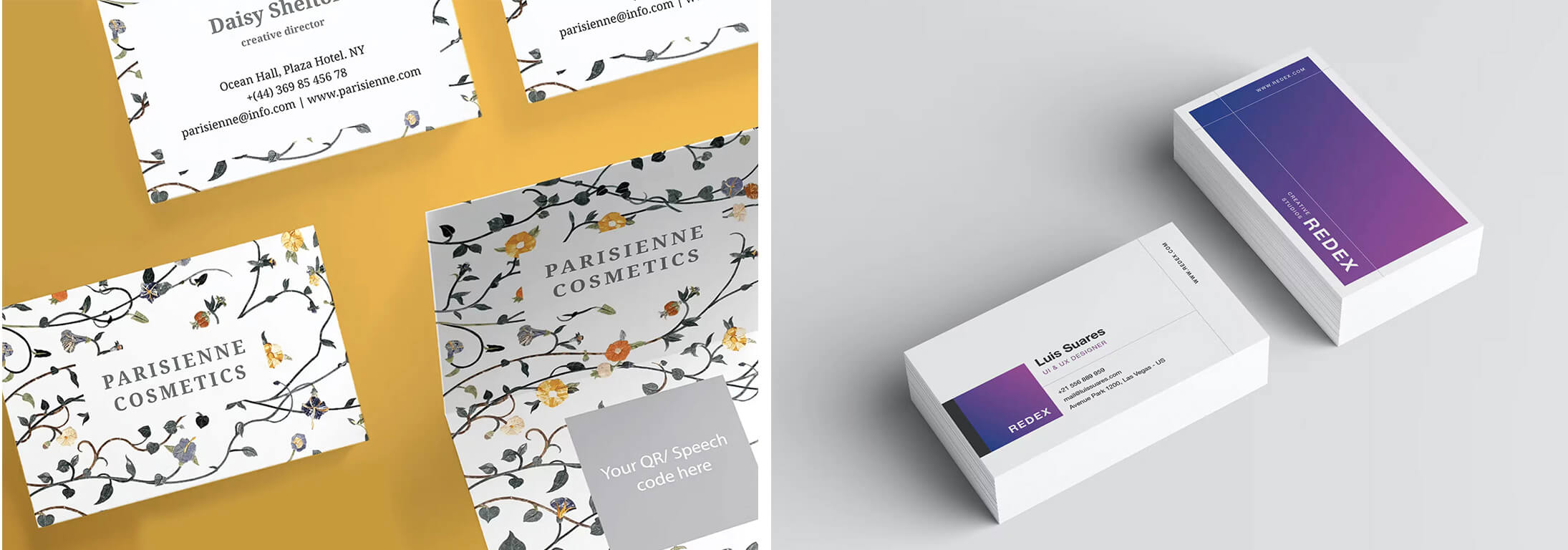
A well-designed business card is an essential tool for any business looking to make a lasting impression on potential clients or customers. It’s the first tangible representation of your brand that prospective customers will receive, so it’s important to get it right.
The design of your business card should reflect the personality and values of your brand. For example, if you’re a creative agency, then choose a bold and colourful design that showcases your creativity. If you’re a law firm, then opt for a more professional and traditional style.
Business card pricing
When it comes to pricing for business cards, there are a few factors to consider. The first is design complexity – the more intricate the design, the higher the cost will be. Printing techniques also play a role; digital printing tends to be less expensive than letterpress or foil stamping.
The quantity ordered can also affect pricing; larger orders tend to have lower costs per card than small ones. Additionally, some printers offer bulk discounts for reordering.
Ultimately, it’s important for businesses to consider their budget when designing and ordering business cards. While high-end options may look impressive, they may not be feasible for all budgets and purposes of use.
Types of business cards

When it comes to business cards, the possibilities are endless. In addition to the standard rectangular shape, businesses can opt for unique options like fold-out cards or die-cut shapes.
Fold-out cards offer more space for information and visuals, allowing businesses to showcase their brand in a creative way.
Die-cut shapes take creativity even further by offering custom designs that reflect the uniqueness of the brand.
However, it’s important not to sacrifice functionality for creativity when designing business cards. Standard rectangular cards may seem less exciting but they offer practicality and versatility in terms of fitting into wallets and cardholders.
The look for your business card

When it comes to choosing the right materials for your business cards, there are several options available. The paper stock is one of the most important considerations as it affects both the look and feel of your card. Thicker paper stocks like 16pt or 18pt can give a more professional and durable impression than thinner ones.
Next, you should consider which finish would suit your brand best – matte, glossy or a combination of both? Matte finishes can provide a more elegant and sophisticated look while glossy finishes tend to be more eye-catching and bold.
For those looking for something unique, there are also specialty options such as metallic or recycled paper stocks. Metallic finishes add shimmer and shine to your card while recycled papers are environmentally friendly.
Other materials that can be used include plastic, wood or even metal cards for those who really want their brand to stand out from the crowd. However, keep in mind that these options may come with higher costs depending on factors like design complexity and quantity needed.
The practicality and usefulness of branded continuation sheets

Continuation sheets are an essential part of professional documents, proposals, and contracts. They provide the necessary space to continue a narrative or list additional information that cannot fit onto one page.
Design strategies for continuation sheets
When it comes to business documents, having a cohesive and professional presentation is crucial. Continuation sheets are often used when longer documents or proposals require additional pages while maintaining the same formatting as the rest of the document.
To ensure a consistent brand image, incorporating your company’s logo on continuation sheets can help reinforce your branding efforts. This simple addition can also make it easier for clients to identify and keep track of important documents related to your business.
Consistent typography is another key design strategy when creating continuation sheets. Choosing fonts that align with existing documents can help create a seamless flow of information and maintain a professional appearance.
Formatting is also an essential element in designing effective continuation sheets. Ensure that margins, line spacing, and page numbering match those of the main document to provide consistency throughout.

Pricing considerations
When it comes to custom continuation sheets, there are several factors that can influence the price range. One of the most significant is paper quality. Higher-quality papers will generally cost more than lower-quality options.
Another factor to consider is size. Custom continuation sheets can be produced in a variety of sizes, from standard letter size to larger or smaller dimensions. The larger the sheet, the higher the price may be.
Printing techniques also play a role in determining the final cost of custom continuation sheets. Options like embossing, foil stamping, or UV coating will add an additional expense compared to standard printing methods.
Customisation options are another consideration when pricing out continuation sheets. Features like custom colours or unique designs can increase costs but ultimately contribute to a more personalised and branded result.
Utilising branded continuation sheets
Continuation sheets are an essential part of business documents, proposals, and contracts. They provide additional space for longer text and maintain a seamless flow of information. When utilised effectively, continuation sheets can convey professionalism and attention to detail.
Types of continuation sheets
Single-sided continuation sheets are ideal when you need to add one or two extra pages to an existing document. They match the size and layout of the original document and allow for consistent formatting throughout. Double-sided continuation sheets are perfect for longer documents that require more space.
The page size of a continuation sheet is also essential. It should be compatible with standard document formats so that it seamlessly integrates with existing files without any issues. The most common sizes for continuation sheets include A4 and letter-size.
Layout is another important feature to consider when choosing a continuation sheet. It should match the layout of the original file so that all information flows smoothly from one page to another.
Compatibility with standard document formats is crucial when choosing a continuation sheet type. Any good stationery supplier will provide options for commonly used software programmes like Word or Excel.
Enhance your brand with branded letterheads and envelopes
Letterheads and envelopes serve as a way to promote brand consistency in all business communications.
Using custom-designed letterheads and envelopes can help elevate the overall professionalism of your brand. By incorporating your logo, colour scheme, typography, and other visual elements into these materials, you can create a cohesive look that reinforces your brand identity.
In addition to enhancing professionalism, using branded letterheads and envelopes also helps establish credibility with potential clients or partners. When recipients receive correspondence from you on high-quality stationery featuring your company’s branding elements prominently displayed, it shows that you take pride in presenting yourself professionally.

Creating impactful letterheads and envelopes
To create an impactful letterhead and envelope design, it’s crucial to incorporate branding elements that represent your company. The logo is the most critical element of a brand identity, so it should be placed prominently on both the letterhead and envelope. It should also be in high resolution for optimal print quality.
Choosing a colour scheme is another essential aspect of designing effective stationery. Companies often have established colours associated with their brand, which can help guide this decision. Consider using complementary hues that enhance the logo and give a professional look to the design.
Typography plays a significant role in creating an impactful design as well. Using consistent fonts across all stationery will maintain visual consistency throughout all communications from your company. Choose legible font types that are easy to read but also reflect your business’s tone and personality
Letterhead and envelope pricing
When it comes to custom-designed letterheads and envelopes, the price range can vary greatly depending on several factors. These include paper quality, printing techniques, and quantity.
Paper quality is a crucial factor in the cost of creating letterheads and envelopes. The higher the quality of paper used, the more expensive it will be. For example, premium cotton-based paper tends to be pricier than standard copy paper.
Printing techniques also play a significant role in determining the final cost of these promotional items. Advanced printing methods such as embossing or foil stamping typically come at a higher cost than simpler options like digital printing.
Another important aspect that affects pricing is quantity – ordering in bulk generally leads to lower prices per unit due to economies of scale.

Utilising branded letterheads and envelopes
Letterheads and envelopes are an essential part of any business promotional stationery. They provide a professional touch to formal business correspondence, such as letters, invoices, and proposals. A well-designed letterhead creates a positive first impression on recipients and reinforces the brand’s identity.
Matching envelopes are equally important as they complement the letterhead design and enhance brand consistency. Distributing these items within the organisation ensures that all departments use them for official communication with clients or partners.
When designing letterheads and envelopes, it is crucial to incorporate branding elements like logos, colour schemes, typography consistently. Additionally, choosing high-quality paper stocks with finishes like matte or glossy adds visual appeal to these materials.
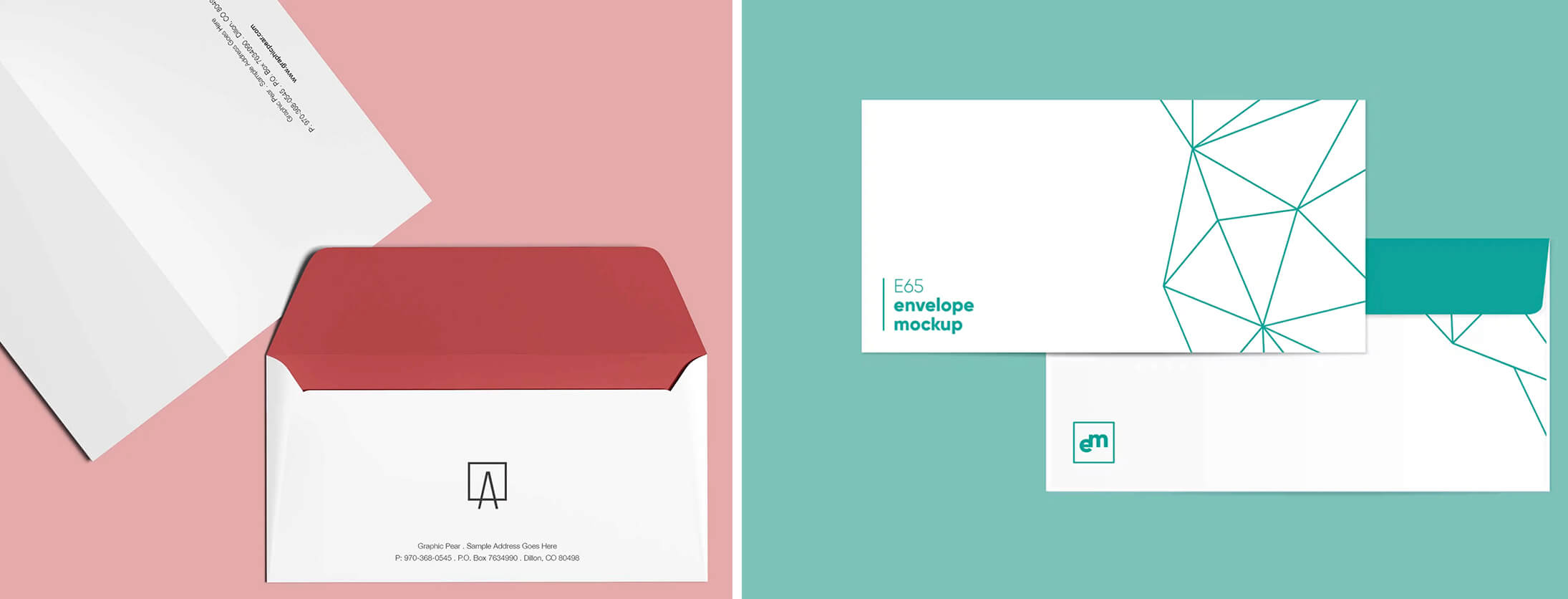
Types of letterhead and envelope sizes
Letterhead sizes can vary depending on the needs of the business, such as A4. Additionally, there are different formats available for envelopes, such as window envelopes that display the recipient’s address through a clear plastic opening.
Specialty options like foil stamping or embossing add an extra touch of elegance to custom-designed letterheads and envelopes. Foil stamping uses metallic foils to accentuate certain elements on the paper while embossing creates raised designs for added texture and dimension.
Choosing appropriate paper stock is crucial when designing letterheads and envelopes. The weight of paper should be strong enough to ensure durability but not too heavy that it becomes difficult to fold or print on. Finish options include matte or glossy coatings which affect how ink adheres to paper.

Creating your branded letterheads and envelopes
When it comes to creating impressive letterheads and envelopes, choosing the right paper stock, weight, and finish is crucial. The paper stock refers to the type of paper used for printing, which can vary in quality and texture.
For a classic look, consider using a high-quality bond or linen paper with a smooth finish that adds sophistication to your branding materials. For a more modern feel, you may opt for textured papers or those with unique patterns that add visual interest.
The weight of the paper also plays an important role in conveying professionalism and credibility. Lighter weights are suitable for casual correspondence while heavier stocks make a statement for formal business communication.
In addition to choosing the appropriate weight and stock type for your letterheads and envelopes, selecting the right finish is equally essential as it affects how colours appear on print. Glossy finishes offer vibrancy but can be prone to smudging while matte finishes create a soft touch effect without any glare.
Branded pens for promotions

Pens have been a popular promotional item for businesses for decades, and their popularity shows no signs of slowing down. This is because pens are practical items that people use every day, making them an effective way to increase brand exposure.
Branded pens can be given away at trade shows or as part of customer appreciation initiatives, allowing the recipient to see the company’s logo every time they use the pen. They can also be distributed internally within an organisation to promote team spirit and brand awareness.
The effectiveness of branded pens lies in their ability to reach a wide audience. Pens are often shared among friends and colleagues, giving your branding even more visibility beyond its initial recipient.
How to utilise branded pens

Branded pens can be an effective marketing tool for businesses. When designing a branded pen, it’s important to consider the overall design and messaging that best represents the brand. Imprinting logos, contact information or taglines on the pen can help create brand awareness and recognition.
When distributing branded pens as gifts or giveaways, consider who the target audience is and what message you want to convey. Pens are often used in daily tasks such as note-taking or signing documents, so they offer repeated exposure to your brand.
It’s also important to choose the right type of pen for your target audience. For example, if you’re targeting professionals in a corporate environment, a high-quality ballpoint pen may be more appropriate than a casual gel pen.
In addition to traditional pens, there are now eco-friendly options available made from recycled materials. These types of pens not only promote sustainability but also align with consumers’ increasing environmental concerns.
Branded pens pricing options
Custom pens are a popular choice for businesses looking to promote their brand. Prices can vary depending on several factors such as the type of pen, quality, quantity and customisation options.
The most common types of pens used for promotional purposes are ballpoint pens, rollerball pens and gel pens.
Quality is another factor that affects the price range of customised pens. Higher quality materials and construction methods generally result in a more expensive product but also provide greater durability and longevity.
Quantity is also a significant factor when it comes to pricing customised promotional items like pens. Ordering larger quantities can often lead to lower individual prices.
The level of customisation desired by the business will impact the overall cost of branded pens. Simple designs with only a logo or contact information tend to be less expensive than elaborate designs with multiple colours or intricate patterns.
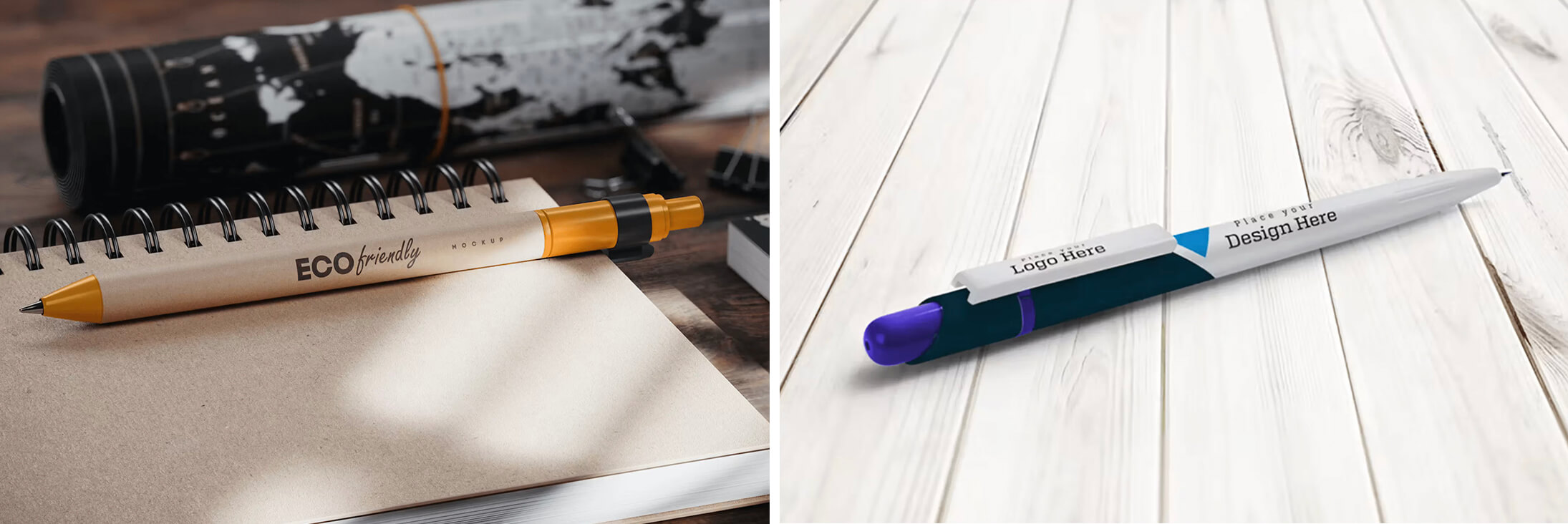
Distributing promotional pens
Pens are a ubiquitous item that people use every day, making them an excellent promotional tool for businesses. Distributing branded pens at trade shows and conferences can not only increase your brand visibility, but it also provides attendees with a useful item they will likely keep and use.
Different type of promotional pens
There are many different types of pens and writing instruments to choose from, each with its own unique features and benefits.
Ballpoint pens are the most common type of pen. They use a small ball bearing in the tip to transfer ink onto paper, making them reliable for everyday use. Rollerball pens have a similar design but use liquid ink instead of paste, resulting in smoother writing.
Gel pens have become increasingly popular in recent years due to their bright colours and smooth flow. The ink is made up of pigment suspended in water-based gel, which allows for vibrant hues and easy gliding on paper.
Fountain pens offer an elegant touch with their fine nibs that create precise lines while requiring less pressure than traditional ballpoints or rollerballs. They use bottled ink rather than cartridges, providing more flexibility when choosing colours and finishes.
When selecting a pen as part of your business stationery arsenal, consider not only the type but also the quality and feel of the pen itself. A well-made pen feels substantial in hand and can leave a lasting impression on recipients long after they’ve used it.
Material used in promotional pens

When it comes to pen manufacturing, there are various materials that can be used depending on the desired outcome. One of the most common materials is plastic, which is affordable and lightweight. Plastic pens often come in a wide range of colours and designs, making them great for promotional purposes.
Metal pens are another popular option as they are durable and have a more premium feel compared to plastic ones. They also tend to last longer, making them a worthwhile investment for businesses looking for long-term branding solutions.

For those looking for eco-friendly options, there are now several sustainable materials being used in pen manufacturing such as recycled paper or bamboo. These types of pens can help reduce waste while still serving their practical purpose.
In addition to these traditional materials, some companies are experimenting with newer technologies such as 3D printing or biodegradable plastics to create unique and innovative pen designs.
Yearlong exposure with branded calendars and planners

Calendars and planners are practical promotional items that provide year-round brand exposure. They are an effective way to keep your business top-of-mind with customers, as they will see your branding every day throughout the year.
Custom calendars and planners can be designed to feature your company logo, images, or messages on each page. This ensures that your brand is visible and reinforces customer loyalty for 12 months straight.
Incorporating branding into your personalised calendar or planner
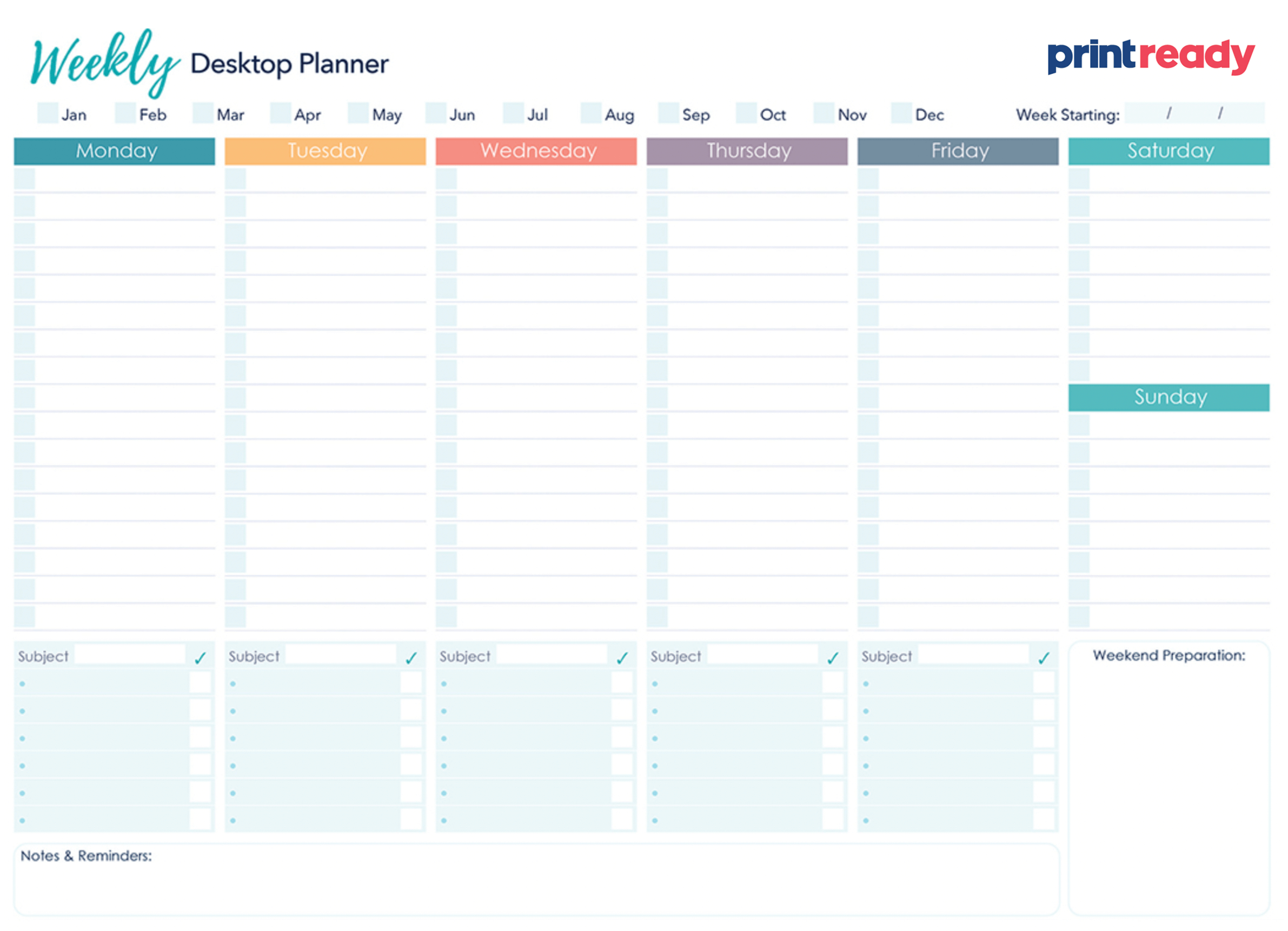
Calendars and planners are effective promotional items that provide year-round brand visibility. Incorporating branding elements into these items can help businesses stay top-of-mind with customers and clients. One technique for incorporating branding elements is featuring the company logo prominently on each page of the calendar or planner.
In addition to logos, images can also be incorporated into calendar and planner designs. These could include product photos, team photos, or other relevant visuals that tie in with the brand message. Using consistent colours throughout the design can also create a cohesive look that reinforces brand recognition.
Messages and taglines are another way to incorporate branding elements into calendars and planners. Including motivational quotes or industry-specific tips on each page can show expertise while reinforcing the brand’s values.
Customised calendar and planning pricing

When it comes to promotional stationery, calendars and planners are some of the most effective items for year-round brand visibility. The price range for custom calendars and planners varies depending on several factors such as size, format, quality, and customisation options.
The size of the calendar or planner is a significant factor in determining its cost. Wall calendars tend to be larger than desk or pocket ones; hence they usually cost more. The format also plays a role since digital formats may have lower costs as compared to printed ones.

Quality is another crucial aspect that affects pricing. High-quality paper stocks with durable binding will naturally cost more than cheaper alternatives. Additionally, if you opt for glossy finishes or embossing on your designs, expect to pay higher prices.
Customisation options like adding company logos, messages or images can also affect the overall price range since this requires additional design work by professionals.
Utilising calendars and planners
Calendars and planners are excellent promotional items that serve a practical purpose while also increasing brand visibility year-round. One strategy for distributing these items is to give them as corporate gifts to clients or employees before Christmas. This not only shows appreciation but also keeps the brand top-of-mind throughout the coming year.
Another effective distribution method is to offer calendars and planners at trade shows or other events where potential customers can interact with the brand. Including a branded calendar or planner in a promotional campaign can increase customer engagement by providing useful information while promoting awareness of products or services.
Calendar and planner formats

One popular format of a calendar is the wall calendar. These calendars hang on walls or doors, making them highly visible in homes or offices. Wall calendars offer ample space for large images and can be customised with branding elements like logos or messages.
Another type is the desk calendar – a practical promotional item that sits right on desks where it will get frequent use throughout the year. Desk calendars typically come in smaller sizes than wall calendars but still provide enough room for notes and reminders.
Options for calendars and planners
When it comes to paper types, weights, and binding options suitable for calendars and planners, there are many choices businesses can consider depending on their needs. Wall calendars may require thicker paper stock than pocket calendars or digital options. Desk calendars may benefit from spiral binding or wire-o binding that allows easy page turning.
The professional appeal of presentation folders

Presentation folders are a staple for any business looking to create a professional impression on clients and customers. These folders not only look polished and organised, but they also serve as an effective marketing tool by keeping all of your presentation materials in one place.
One of the primary benefits of using presentation folders is their ability to help you stay organised. When meeting with potential clients or giving presentations, it’s important to have all your materials easily accessible and in one place. Presentation folders can keep everything from brochures and flyers to business cards and product samples neatly organised and readily available.
Creating branded presentation folders
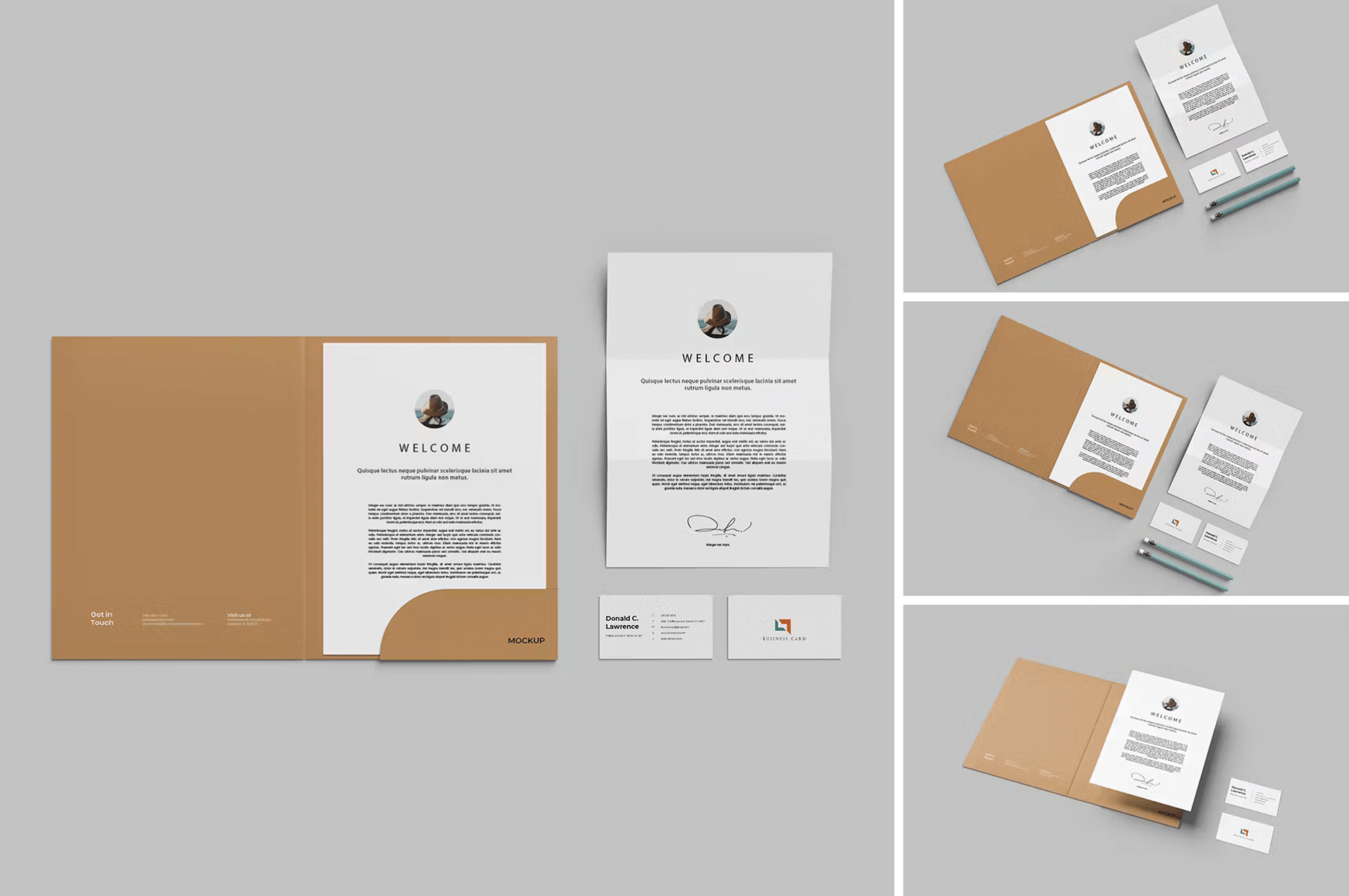
Designing branded presentation folders is an essential aspect of creating a professional image for your business. A well-designed folder can make all the difference in how potential clients perceive your brand and its offerings. Incorporating your logo, tagline, or unique artwork into the design will help create a cohesive brand identity.
- When designing a presentation folder, it’s important to consider the purpose it serves. Is it for sales pitches? Conferences? Meetings? Tailor your design accordingly to suit each situation.
- The colour scheme should align with your brand’s visual identity and be visually appealing as well. Use complementary colours that don’t clash or overwhelm the eyes and make sure they are consistent throughout all materials stored in the folder.
- Beyond just incorporating logos and taglines, using unique artwork can add interest to the overall design. However, keep in mind that this artwork should still align with your brand’s messaging and values.
- Another factor to consider is typography – choose fonts that are easy to read but also match your branding style.
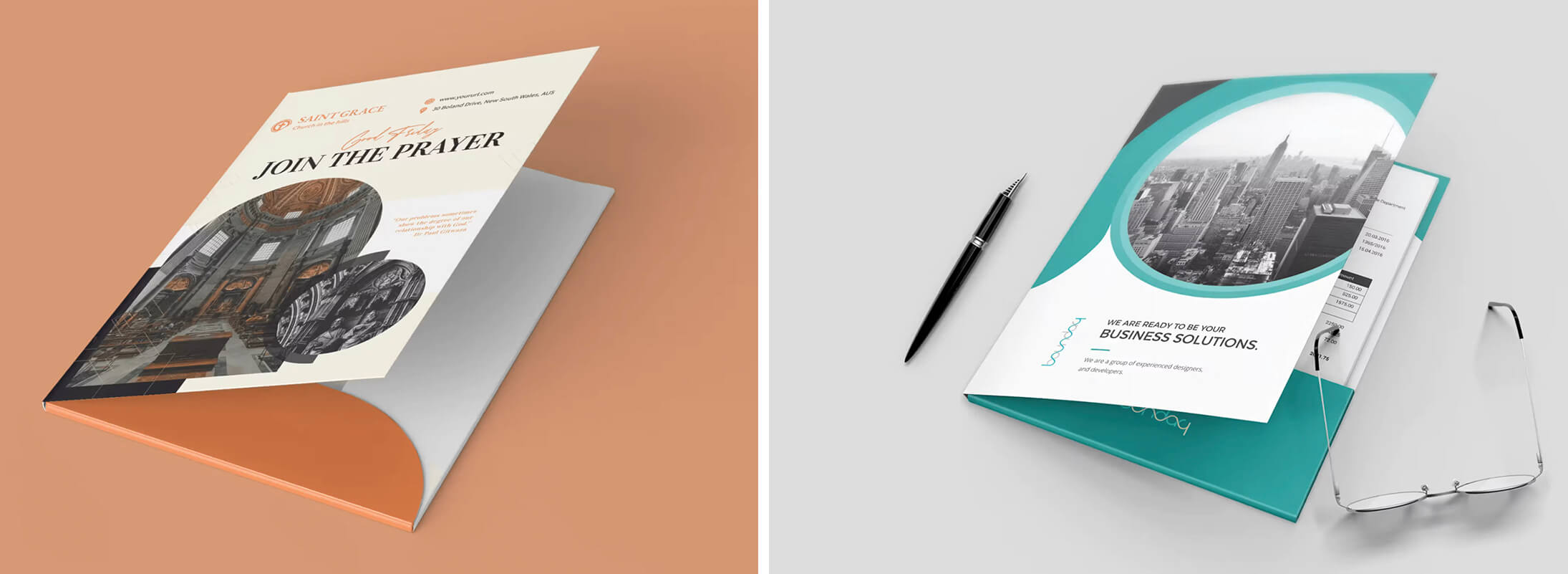
Presentation folders pricing
When it comes to the price range of custom presentation folders, there are several factors that can affect the final cost. One of these is size, as larger folders will generally cost more than smaller ones.
The complexity of the design also plays a role in determining the price, with intricate graphics or multiple folds driving up costs. Printing techniques such as foil stamping or embossing can add an extra level of customisation but may come at a higher price point.
Quantity is another factor to consider when pricing out custom presentation folders. Typically, ordering in bulk will result in a lower unit cost compared to smaller orders.
Utilising presentation folders
Presentation folders are a versatile tool for promoting your business. They can be used to store and organise marketing materials such as flyers, brochures, and business cards in one place. Additionally, presentation folders can help to create a professional image of your brand during conferences, meetings and sales pitches.
During conferences and meetings, presentation folders can be given away as promotional items so attendees have everything they need right at their fingertips. It’s important that all materials stored inside, even down to how to pick the perfect brochure are consistent with branding guidelines for maximum effectiveness. Having a well-chosen brochure can help your potential clients understand your offerings better and why they should opt for your services.

Types of presentation folders
When it comes to presentation folders, there are several types available to choose from.
- Pocket folders are a popular option and come with one or more pockets on the inside for holding documents securely in place. These can be customised with your business branding and used at conferences, meetings or as part of marketing campaigns.
- Tri-fold folders are another option that provide ample space for displaying information. They fold out into three sections, making them ideal for presentations where you need to showcase multiple items such as brochures, flyers or product samples.
- Expandable folders offer even more versatility, providing additional storage space within the folder itself. This is achieved through expanding sides that allow you to store larger volumes of paper or other materials without having to carry around multiple files.
Materials available for presentation folders
When it comes to creating branded presentation folders, the choice of materials is an important factor in achieving a professional and polished look. Paper stocks are available in various weights and finishes, from glossy or matte to textured or metallic. The right paper stock can elevate the overall design and reinforce the brand’s image.
Finishes such as embossing, debossing, foiling or spot UV coating add depth, texture and visual interest to presentation folders. These techniques can also be used selectively on logos or text for emphasis.
Folder closure options include standard pockets with business card slits or more sophisticated closures like magnets or ribbons. These finishing touches enhance functionality while adding sophistication to the overall presentation.
Customised labels and stickers for branding, packaging and promotions
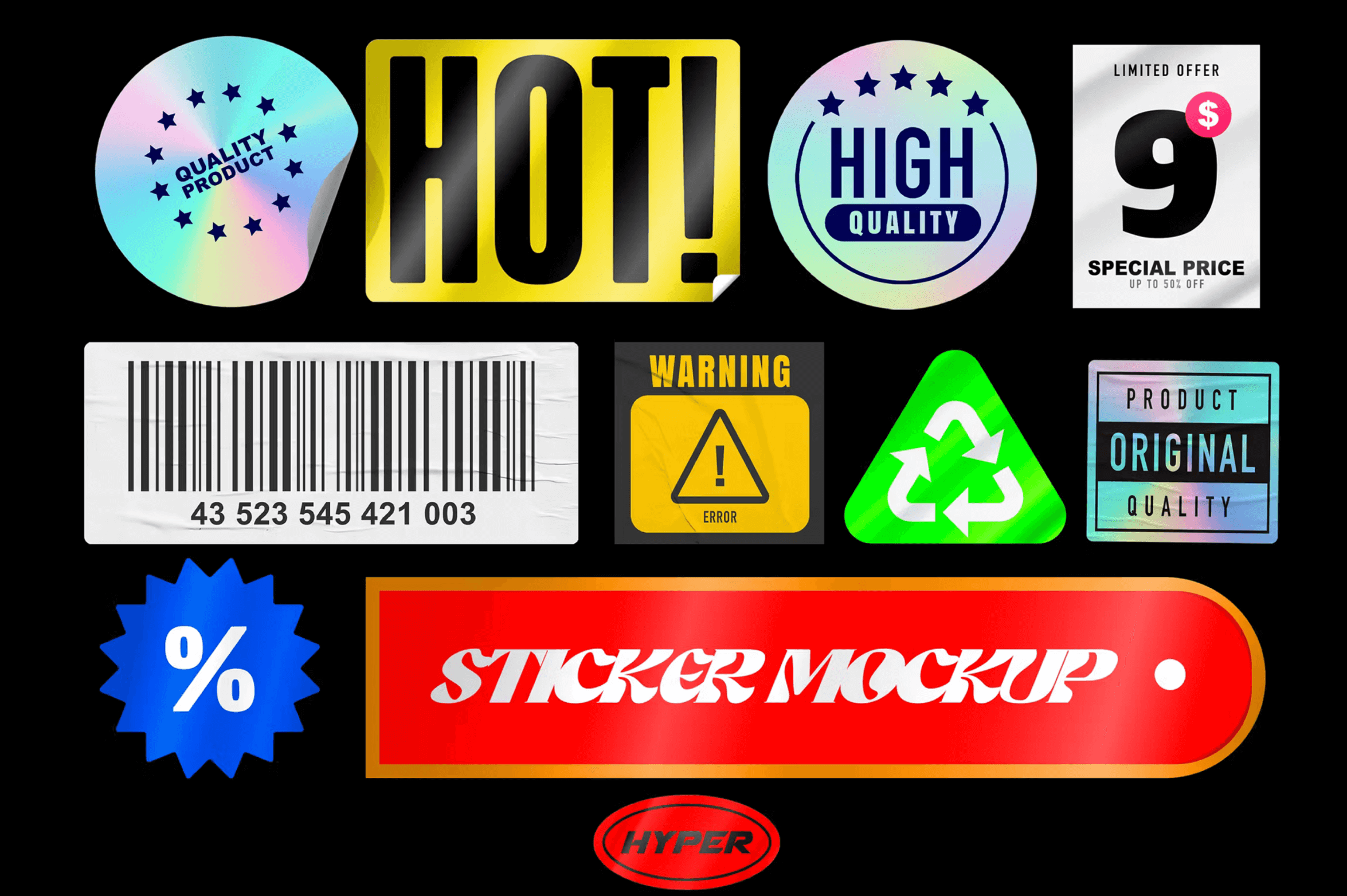
Customised labels and stickers are essential tools in branding, packaging, and product promotions. They provide a unique way to showcase your brand’s identity while also attracting the attention of potential customers.
Labels serve as an effective marketing tool by providing information about the product’s features, benefits, ingredients or usage instructions. Customers will often make purchasing decisions based on these details provided on the label.
Stickers can be used for promotional purposes like advertising sales or discounts or simply to strengthen brand awareness by featuring company logos or slogans. The use of eye-catching colours and designs can help attract customer attention and create a lasting impression.
Creating eye-catching labels and stickers

Creating eye-catching labels and stickers is essential for promoting your brand and products effectively.
- One of the first things to consider when designing a label or sticker is incorporating your brand logo in a prominent position.
- Using bold, bright colours can also help grab customers’ attention and make your product stand out on shelves. It’s important to choose colours that align with your brand identity and evoke positive emotions in customers.
- Typography plays an important role in creating visually appealing labels and stickers too. Choosing a font that matches the personality of your brand can give it a unique look and feel. Make sure the font size is readable, even from a distance.
- Product-specific information should be included on the label or sticker but keep it concise as too much information can confuse customers. Use clear language to describe what sets your product apart from others on the market.
- Consider using die-cut options for custom shapes that add visual interest to your design. Utilising textures like embossing or foil stamping techniques can also enhance the overall look of the label or sticker.
Custom labels and stickers pricing
Size is one of the primary factors that influence the cost of custom labels and stickers. Larger sizes will generally cost more than smaller ones due to the additional materials required for production.
The shape of a label or sticker can also affect its price. Custom shapes require special die-cutting equipment which can be more expensive than standard shapes like rectangles or circles.
Material selection is another factor that impacts pricing. Vinyl is typically more durable than paper stock but comes at a higher cost. Holographic or waterproof options may also increase the overall price point.
Printing techniques play a significant role in determining costs too. Full-colour printing using digital presses may be more expensive than single-colour printing using traditional methods like screen-printing.
Quantity plays an essential role in pricing custom labels and stickers since bulk orders often come with discounts per unit compared to individual purchases. With all these considerations in mind, it’s important to weigh each factor against your budget when making purchasing decisions regarding promotional stationery for your business.
Utilising labels and stickers

Labels and stickers are versatile tools that can be used to enhance brand visibility and recall. One effective way to utilise them is by incorporating them into product packaging. By adding customised labels or stickers with the company logo or tagline, businesses can create a memorable impression on customers.
As giveaway items, labels and stickers are an affordable yet impactful marketing tool. Customised labels or stickers with catchy phrases or designs can encourage customers to use them on their personal belongings like laptops, water bottles, or phone cases- increasing brand exposure within their social circles.

Label and sticker formats
When it comes to branding and marketing, labels and stickers can help businesses stand out. However, choosing the right format for your label or sticker is just as important as the design itself.
Rectangular labels offer a classic look that is perfect for displaying product information such as ingredients or pricing. They’re also versatile enough to be used on packaging, promotional materials or even event badges.
Circular stickers are another popular option due to their eye-catching shape. They work well for product packaging or as giveaway items at events since they can easily be placed on water bottles, laptops or notebooks.
Die-cut options take things up a notch by giving businesses the ability to create custom shapes that align with their brand identity. This format works best when you want an unconventional yet memorable look for your labels and stickers.
Materials available for labels and stickers

Labels and stickers play a crucial role in branding, packaging, and product promotions. Choosing the right material is essential to create eye-catching labels that can withstand wear and tear.
Paper labels are a popular choice due to their affordability and versatility. They come in different finishes like matte or glossy, making them suitable for various products such as cosmetics or food items.

Vinyl labels offer durability against water exposure and harsh conditions which makes them ideal for outdoor settings. They are available in clear or opaque materials, perfect for labelling glass bottles or plastic containers.
Specialty materials like holographic or waterproof options add an extra layer of visual appeal to your label design. Holographic coating creates an attractive 3D effect on the label while waterproof coatings ensure that the label remains intact even when exposed to moisture.
Branded office desktop calendars for brand visibility

Customising office desktop calendars with the company logo, tagline or custom designs for each month is an effective way to promote brand recognition while providing value to clients or employees. It shows that the business is committed to creating a cohesive brand experience.
Desktop calendars come in various types such as flip calendars, tent calendars, and easel calendars which differ in size, layout and display options. The choice depends on personal preferences and suitability for different workspaces.
Incorporating branding into office desktop calendars
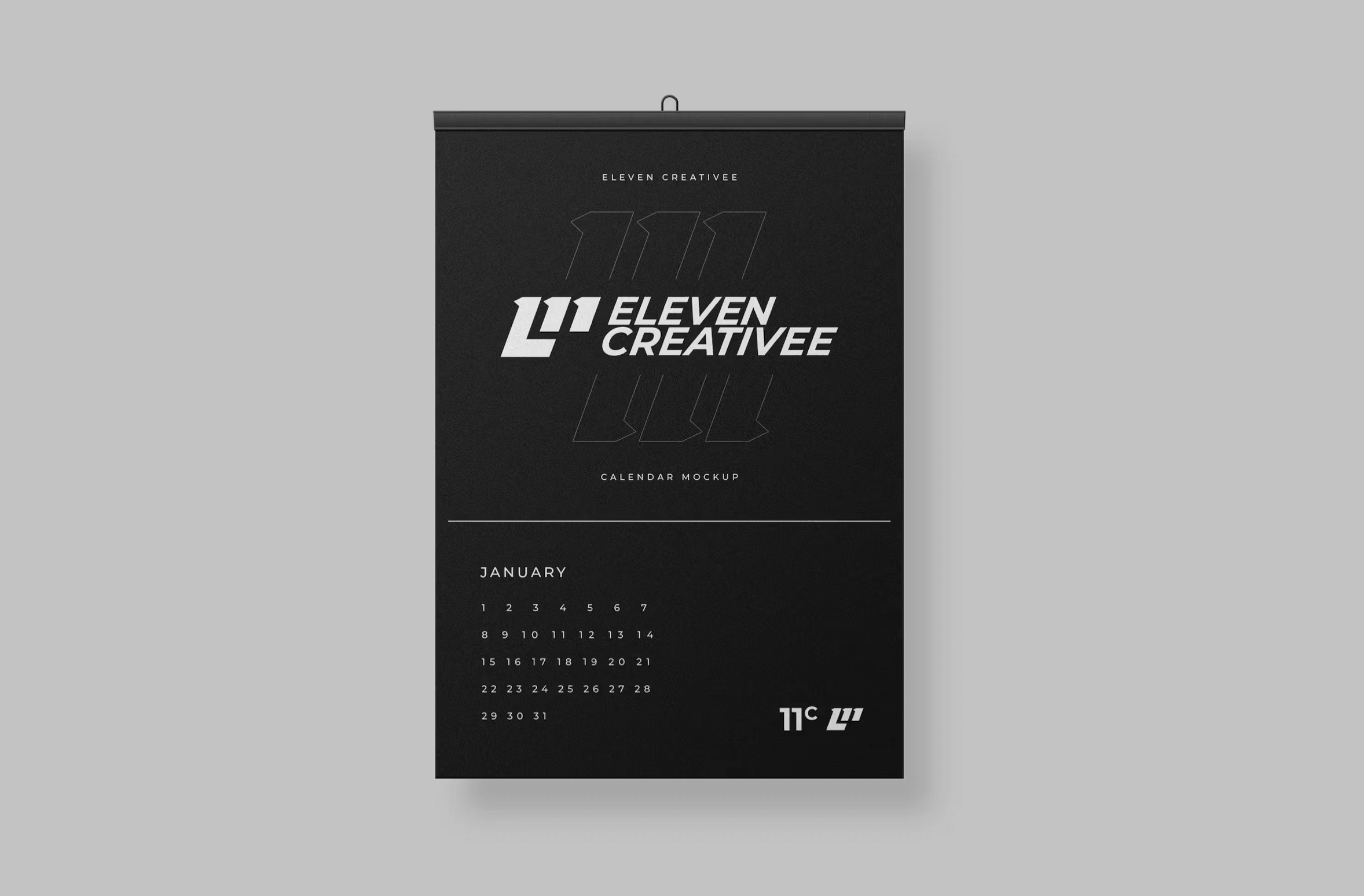
Office desktop calendars are practical tools for time management, but they can also serve as branding opportunities. By incorporating branding elements into these calendars, businesses can increase brand visibility and promote their products or services throughout the year.
One strategy for incorporating branding elements is featuring company logos prominently on each page of the calendar. This helps to reinforce brand recognition among employees and customers who use the calendar regularly.
Another approach is to integrate taglines or custom designs that align with the brand’s visual identity. For example, a coffee company could feature different types of coffee beans for each month, while a gym might showcase inspirational quotes related to fitness and health.

Customising office desktop calendars in this way can also make them more appealing as promotional gifts. Whether given away at trade shows or handed out to employees during the holidays, branded desk calendars provide an ongoing reminder of your business long after other promotional items have been forgotten.
To ensure maximum impact, it’s important to consider factors like size, format, printing techniques and quality when designing custom office desktop calendars.
Custom office desktop calendars pricing

Custom office desktop calendars can vary in price depending on various factors. The size of the calendar will play a major role in determining its cost, with larger sizes generally being more expensive than smaller ones.
Format is another factor to consider when pricing custom office desktop calendars. Different formats such as flip calendars, tent calendars or easel calendars will come at different prices, and it’s crucial to choose one that fits within your budget.
The quality of the materials used for printing and construction also affects the price range. Higher-quality materials such as thicker paper or glossy finishes may increase the cost of production.
Printing techniques are also important to consider when setting a budget for custom office desktop calendars. Techniques like full-colour printing or embossing may be more costly compared to simpler options like single-colour prints.
Additionally, customisation options can affect costs significantly as well. If you want each month of the calendar to feature unique designs or images tailored specifically for your brand, this could drive up costs significantly.
Distributing office desktop calendars

Distributing office desktop calendars to employees, clients or as promotional gifts is an effective way of promoting your brand and building customer loyalty. One way to distribute them is during corporate events such as trade shows or conferences where you can give them away for free.
You can also send them out to clients and customers along with other promotional materials in a welcome package. This will show that you appreciate their business and encourage repeat purchases.
Another idea is to use the calendar’s customisable feature by including important company dates such as product launches or employee birthdays.
Types of office desktop calendars

When it comes to choosing the right type of calendar, there are several options available in the market.
Flip calendars are popular due to their convenience and portability. They typically feature a spiral-bound design that allows you to flip through pages easily, with each page displaying one day or week at a time.
Tent calendars are another popular option that can be easily placed on your desk or table. These calendars have an L-shaped design that enables them to stand upright without any support.
Easel calendars, as the name suggests, come with a built-in easel stand that allows them to be displayed vertically on any flat surface like desks or shelves. They generally feature larger page sizes than flip and tent calendars, providing ample space for jotting down notes and appointments.
When selecting an office desktop calendar, consider the size of its pages along with its layout options. Some layouts may include daily or weekly spreads while others may combine both formats into one view.
Finishes for office desktop calendars
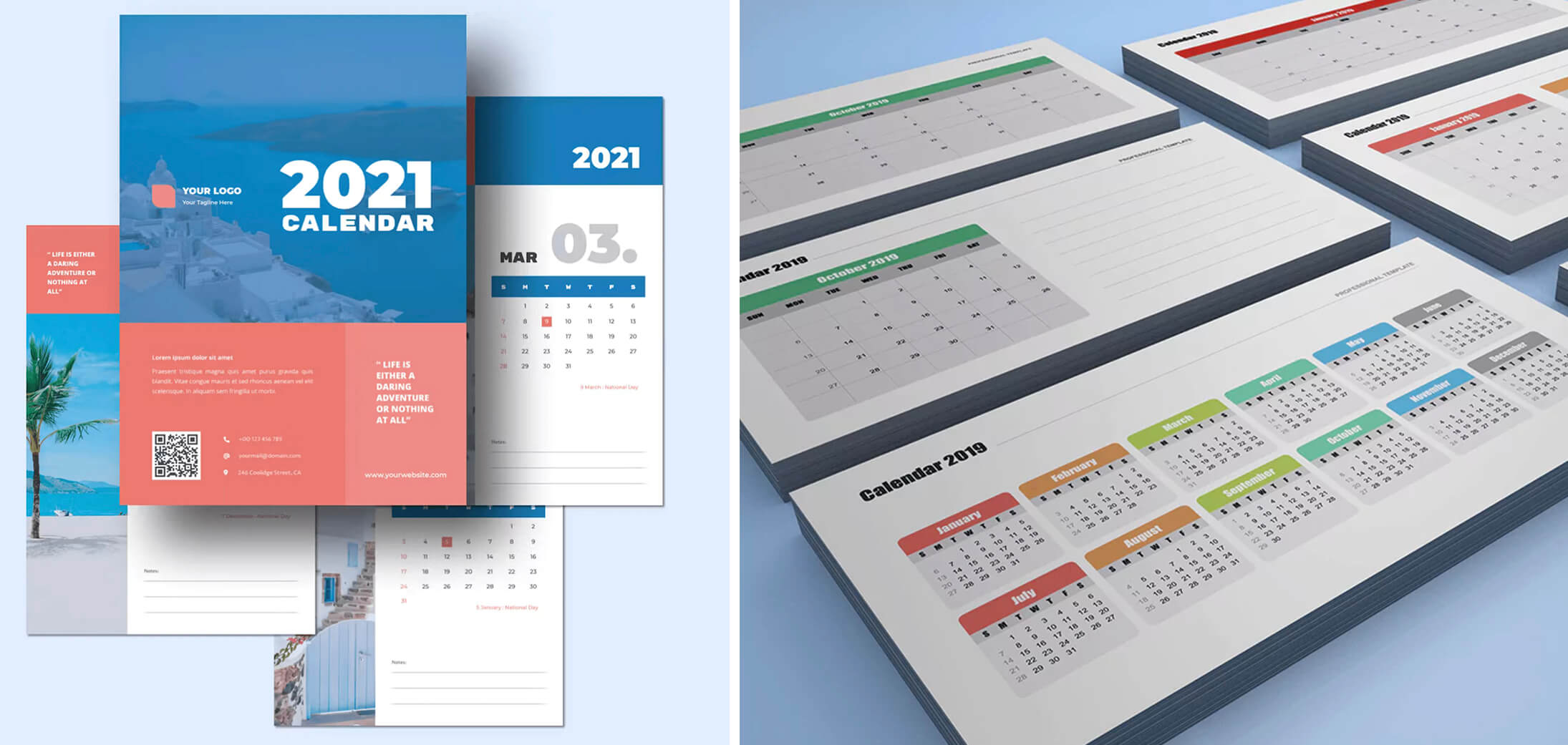
When it comes to office desktop calendars, the paper quality, thickness, and finishes are crucial factors that affect their durability and overall appeal. Choosing the right type of paper is essential to ensure that the calendar can withstand daily use for an extended period.
The thickness of the paper used for office desktop calendars should be balanced between being thick enough to feel substantial but thin enough not to add too much bulkiness or weight.
There are various finishes available for office desktop calendars such as matte or gloss coatings which offer different levels of sheen on the surface material. Matte coating provides an elegant look without any shine, while glossy gives off reflection when placed under light.
Desk pads and desktop mats for an organised and branded workspace
Desk pads and desktop mats are essential tools for creating a well-organised workspace while also offering branding opportunities. These accessories provide a smooth surface that protects the desk from scratches and marks, as well as providing a comfortable writing surface.
By using custom-branded desk pads and desktop mats, businesses can create a cohesive brand experience throughout their office space. They serve as constant reminders of the company’s identity to employees, clients, and visitors alike.
Creating branded desk pads and desktop mats
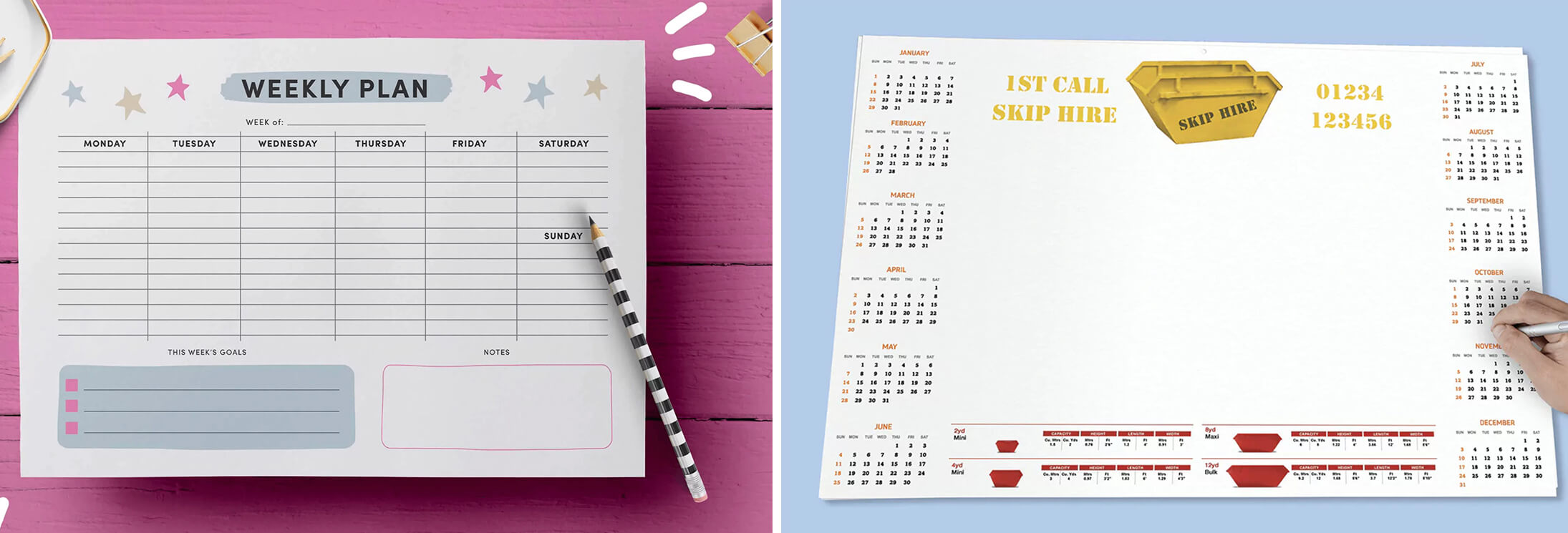
When creating a design, it’s important to consider elements that align with your brand identity. This could include incorporating logos, taglines or unique designs that represent your company.
When it comes to designing desk pads and mats, simplicity is often key. A clean and minimalistic design can help ensure that the focus remains on your branding elements rather than overwhelming the user with too much information.
Price range for custom desk pads and desktop mats
Custom desk pads and desktop mats are a great addition to any workspace, providing not only an aesthetically pleasing look but also a practical use. The price range for these items varies depending on several factors:
- Larger sizes generally come with a higher price tag than smaller ones since they require more materials to produce.
- Premium materials like leatherette or eco-friendly options are often more expensive than standard materials like fabric or vinyl.
- Printing techniques can also influence the final price of custom desk pads and desktop mats. Advanced printing methods may come at an extra cost compared to traditional printing methods used for basic designs.
- Options like unique designs or logos add value but increase production costs.
- Ordering in bulk allows manufacturers to save on expenses related to setup fees and shipping charges while offering discounts per item sold.
Distributing desk pads and desktop mats

When it comes to distributing desk pads or desktop mats, there are various creative options available.
One idea is to include desk pads or desktop mats as part of an onboarding package for new hires. This will not only provide them with a useful tool but also reinforce the company’s brand values from day one.
Another option is to distribute branded desk pads or desktop mats at trade shows, conferences or other industry events. This can help increase visibility and engagement with potential clients while providing them with something tangible to remember the business by.
For promotional purposes, companies can offer custom-branded desk pads or desktop mats as gifts. It’s a unique way to show appreciation for employees’ hard work while promoting the business in their homes and offices.
Types of desk pads and desktop mats
One of the most popular materials used in desk pads is leatherette. This material is durable, easy to clean, and provides a professional look. Leatherette desk pads come in various sizes, thicknesses, and colours, making them suitable for any office decor.
Another option for desk pads is fabric. Fabric desk pads have a softer feel than their leather counterparts and come in different patterns and textures that can add some personality to your workspace. However, they may be less durable than other materials.
For those who prioritise sustainability or eco-friendliness, there are also options such as recycled paper or bamboo desktop mats available on the market. These eco-friendly options not only help reduce waste but also give off natural aesthetics that can complement any workspace décor.
In terms of size, many manufacturers offer standard sizes like 17×22 inches or 24×19 inches; however custom sizing is possible too if you need something that fits your specific needs better.
Thickness varies from thin (less than 1mm) to thick (over 3mm), with thicker versions providing more cushioning for writing surfaces while thinner ones being lighter weight – potentially easier to move around when needed.
Practical and efficient: branded duplicate invoice and receipt books

Duplicate invoice and receipt books are essential tools for businesses, particularly those that engage in financial transactions with customers or clients. These books allow companies to keep track of their sales records efficiently, while also providing a reliable way to manage their finances.
One of the most significant advantages of using duplicate invoice and receipt books is that they simplify the process of creating invoices or receipts. By having pre-printed forms with carbon copies, businesses can fill out all the necessary information quickly and easily without needing to create new documents from scratch every time. This streamlined approach saves valuable time and resources while ensuring accuracy.
Another practical aspect of these books is that they provide an organised way to maintain records. The duplicate copies act as backups in case one gets lost or damaged, allowing businesses to access previous transaction details when needed quickly.
Customisation options for duplicate invoice and receipt books
One way to customise invoice and receipt books is by including the company logo on every page. This not only adds a touch of branding but also reinforces the credibility of the business with each transaction.
Another option for customising these books is by incorporating contact information such as phone number or website URL into each sheet.
Custom duplicate invoice and receipt books pricing

When it comes to custom duplicate invoice and receipt books, there are a few factors that can affect the price range. The size of the book is one such factor – larger books will typically be more expensive than smaller ones. Another factor is the number of duplicate copies required; books with fewer duplicates may cost less than those with more.
Binding options also play a role in determining the price of custom duplicate invoice and receipt books. Spiral binding tends to be cheaper than other types like perfect binding or hardcover binding.
Prices for custom duplicate invoice and receipt books can vary widely depending on these factors as well as any additional customisation options chosen by customers, such as including their company logo or brand colours.
Utilising duplicate invoice and receipt books

Duplicate invoice and receipt books are a practical tool for managing financial transactions in various business settings. Retail stores can use them to record sales, refunds, and exchanges accurately. For service-based businesses like repair shops or beauty salons, duplicate books help track appointments, payments, and tips.
Invoicing clients is another crucial aspect of any business that requires accurate record-keeping. Duplicate invoice books allow you to keep a copy of each transaction for your records while providing customers with their own copy.
Branded compliment slips as a personal way to express appreciation
Compliment slips are a commonly overlooked item in the world of business stationery, yet they can be incredibly powerful tools for strengthening customer relationships and enhancing brand reputation. These small pieces of paper offer a personal touch that can go a long way in expressing gratitude and appreciation to clients, customers, or business partners.
The beauty of compliment slips lies in their simplicity; they allow you to convey your appreciation without overwhelming the recipient with too much information. A simple message thanking them for their custom or expressing how much you appreciate their collaboration can leave a lasting impression on the reader.
Creating branded compliment slips
When creating these slips, it’s essential to ensure they align with your brand identity and messaging. One of the most effective strategies is to incorporate logos, taglines, or personalised messages that reflect the company’s values and tone.
The logo should be prominently featured on the compliment slip as it reinforces brand recognition. It should also complement the overall design and not overpower other elements.
It’s crucial to choose colours that match those used in other marketing materials such as brochures, business cards etc., so there is consistency across branding efforts.
Using high-quality paper stock will help create a professional look and feel, making customers more likely to hold onto the compliment slip for future reference.
Custom compliment slips pricing

When it comes to custom compliment slips, the price range can vary depending on different factors.
The first factor is the size of the slip. The larger the size, the more expensive it will be compared to a smaller size.
Another factor that affects price is paper quality. A heavier or higher quality paper will increase the cost of your custom compliment slips.
Printing techniques also play a role in determining price. Embossing or foil stamping may come at an additional cost compared to regular printing methods.
Customisation options such as adding logos, taglines or personalised messages can also affect pricing since they require additional design work.
Quantity ordered is another consideration for pricing as bulk orders tend to have lower costs per unit compared to small orders.
Utilising compliment slips

One effective way of utilising compliment slips is by sending them along with product orders as a way of thanking customers for their purchases. This small gesture can go a long way in strengthening customer relationships and fostering brand loyalty.
In addition to thanking customers for their purchases, compliment slips are also useful for acknowledging referrals made by existing customers. By sending personalised thank-you notes to referred clients, businesses can show their appreciation and encourage further word-of-mouth marketing.
Different types of compliment slips
Standard rectangular compliment slips are the most commonly used type. They have a simple design with ample space for writing messages of thanks and appreciation. These types usually measure 99mm x 210mm, which is roughly one-third of an A4 paper size.
Folded cards, on the other hand, provide more space for creative expression since they offer four panels instead of two like standard rectangles. This allows businesses to include additional information about their products or services while still expressing gratitude towards their clients.
When choosing between these two types, it’s important to consider factors like budget, printing techniques as well as available space for storage and distribution.
In terms of layout and design features, compliment slips can be customised according to brand colours, logos and taglines that reflect the company’s values and messaging.
Options for compliment slips
When it comes to creating a professional image for your brand, the type of paper stock and finish you choose for your compliment slips can make all the difference.
One option is to use high-quality, heavyweight paper that feels sturdy and substantial in the recipient’s hand.
Another consideration is the finish of the paper. A matte or uncoated finish provides a subtle texture that feels sophisticated and understated, while a glossy or coated finish gives off a sleek and modern vibe.

Texture options are also important to consider as they add another dimension to your compliment slip design. Embossed or debossed textures create an impression on the paper surface that adds depth and interest, while foil stamping offers an elegant touch of shimmer.
Portable and attention-grabbing promotional tools
Rollup banners are a popular and effective way to attract attention at events, trade shows, or retail environments. They provide an eye-catching display that can easily be transported from one location to another.
Rollup banners are incredibly cost-effective compared to other forms of advertising such as billboards or TV commercials.
Not only do they have lower upfront costs but they’re also reusable which means you can use them again in different settings without having additional expenses on creating new materials.
Creating impactful rollup banners
The first step in creating a successful design is incorporating the brand’s logo and using brand colours consistently throughout the banner.
Taglines should be short, concise, and memorable while still conveying the brand’s message effectively. Using compelling visuals such as high-quality images or graphics can also grab attention and create interest in what the business has to offer.
Key messaging should be clear and easy to read from a distance, so larger font sizes are recommended for important information. Keeping text minimal on rollup banners is vital because it allows people to quickly scan and understand what your company offers without being overwhelmed by too much information.
Custom rollup banners pricing

The price range for rollup banners can vary depending on several factors, including size, material quality, printing techniques, durability and additional features.
- Size is one of the most significant factors affecting the cost of custom rollup banners. Larger sizes tend to be more expensive than smaller ones due to the extra materials required in production.
- Banners made from premium-grade vinyl or fabric materials tend to be more durable and long-lasting compared to low-quality options.
- Printing techniques like digital printing or screen printing add value based on their level of complexity and sophistication; however, they may require specialty equipment resulting in higher prices.
- Durability is another factor that affects the price of custom roll-up banners as it depends on how often you intend to use them. Banners with retractable mechanisms last longer but come at a higher cost than those without any mechanism.
- Additional features like carrying cases and retractable mechanisms also increase banner costs but provide easy transport capabilities between locations while protecting your investment from damage during transportation.
Utilising rollup banners
When utilising rollup banners, it’s essential to consider the event type and target audience. For instance, if you’re participating in a corporate event with professionals from different industries, designing the perfect rollup banner should be your goal. This banner should be professional yet creative enough to capture their attention.
The messaging on your rollup banner should be concise and clear while incorporating key details like your brand logo and tagline. Using compelling visuals can also create a memorable brand presence that resonates with your target audience.
For retail environments or point-of-sale displays, rollup banners can help showcase new products or limited-time offers effectively. Add a sense of urgency by using phrases like “limited time only” or “while supplies last.”
Another great way to utilize roll-up banners is by using them as directional signage within large events or venues. This not only helps attendees navigate through the space but also promotes your brand in an impactful way.
Types of rollup banners

When it comes to rollup banners, there are a variety of options available to fit your specific needs. One of the first decisions you’ll need to make is whether you want a single-sided or double-sided banner.
Single-sided banners have graphics printed on one side only, making them lighter and more affordable than their double-sided counterparts. They can be ideal for events or displays where they will be viewed from one direction.
Double-sided banners feature graphics on both sides, providing maximum exposure and visibility. They tend to be heavier due to the added material and are typically more expensive than single-sided options.
In addition to choosing between single- and double-sided banners, you’ll also need to consider factors such as size, weight, and ease of assembly. Larger banners may require additional support systems or heavier materials, while smaller ones may be easier to transport but less impactful in terms of visual impact.
Ease of assembly is an important consideration when selecting a rollup banner – look for designs that allow for quick setup with minimal tools or equipment required. This can save time during busy events or trade shows when every minute counts!
Materials utilised for rollup banners

One of the essential factors to consider when producing rollup banners is the choice of materials.
Vinyl is one of the most common materials used for rollup banners due to its durability and resistance to wrinkling. It’s an excellent option for outdoor use as it can withstand harsh weather conditions without fading easily.
Fabric options like polyester or nylon are lightweight, making them easy to transport but may not be as durable as vinyl. However, they offer better print quality and provide a more professional look compared to vinyl.
Hybrid options combine both fabric and vinyl material properties, providing customers with a balance between durability and high-quality print output. This option also offers versatility in terms of design possibilities while ensuring that the banner can last long enough without wear and tear.
Branded loyalty cards for building customer loyalty

Loyalty cards are becoming an increasingly popular marketing tool for businesses of all sizes. These cards offer a variety of benefits, including building customer loyalty, increasing repeat business, and encouraging engagement with customers.
One key benefit of loyalty cards is that they create a sense of exclusivity and value for customers. By offering rewards or discounts to loyal customers who use the card regularly, businesses can incentivise their customers to continue shopping with them.
Designing branded loyalty cards
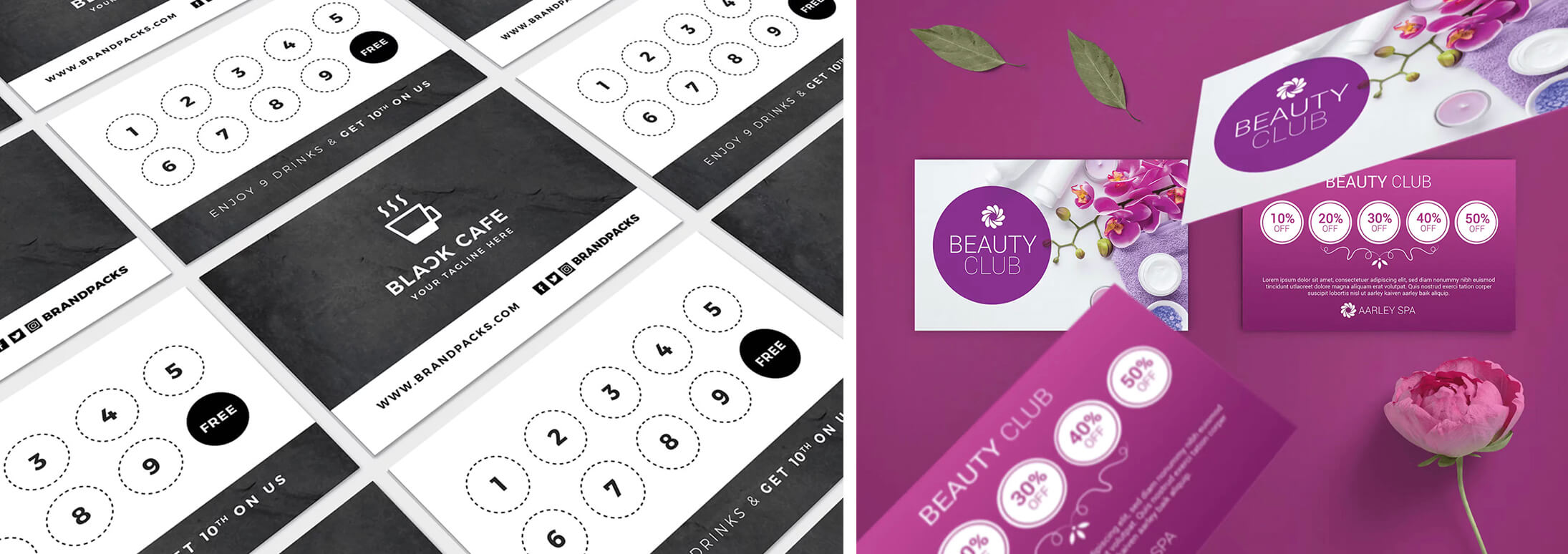
Designing branded loyalty cards is a crucial aspect of building customer loyalty. Incorporating the brand logo, colours, and unique identifiers can help reinforce the brand’s image and create a sense of exclusivity for customers. It is essential to choose an eye-catching design that aligns with the brand’s overall aesthetics.
The loyalty card should be visually appealing while also providing relevant information like rewards or discounts. The font used on the card should be easy to read, and the language used should reflect the business’s tone.
Custom loyalty cards pricing
When it comes to custom loyalty cards, the price range can vary depending on several factors. Printing techniques also play a role in determining the cost of custom loyalty cards. High-quality printing methods like offset or digital printing may come at a premium compared to simpler options like screen-printing.
Customisation options are another factor that affects pricing. The more customised you want your card design to be, such as adding foil stamping or embossing, the higher the cost will be.
Distributing loyalty cards to customers
To distribute loyalty cards, businesses can provide them at the point of sale. Incorporating a well-designed loyalty card programme into your business strategy not only encourages repeat business but helps build stronger relationships with your customers by rewarding their support while providing valuable insight into how you might serve them better
Branded postcards as a cost-effective marketing tool
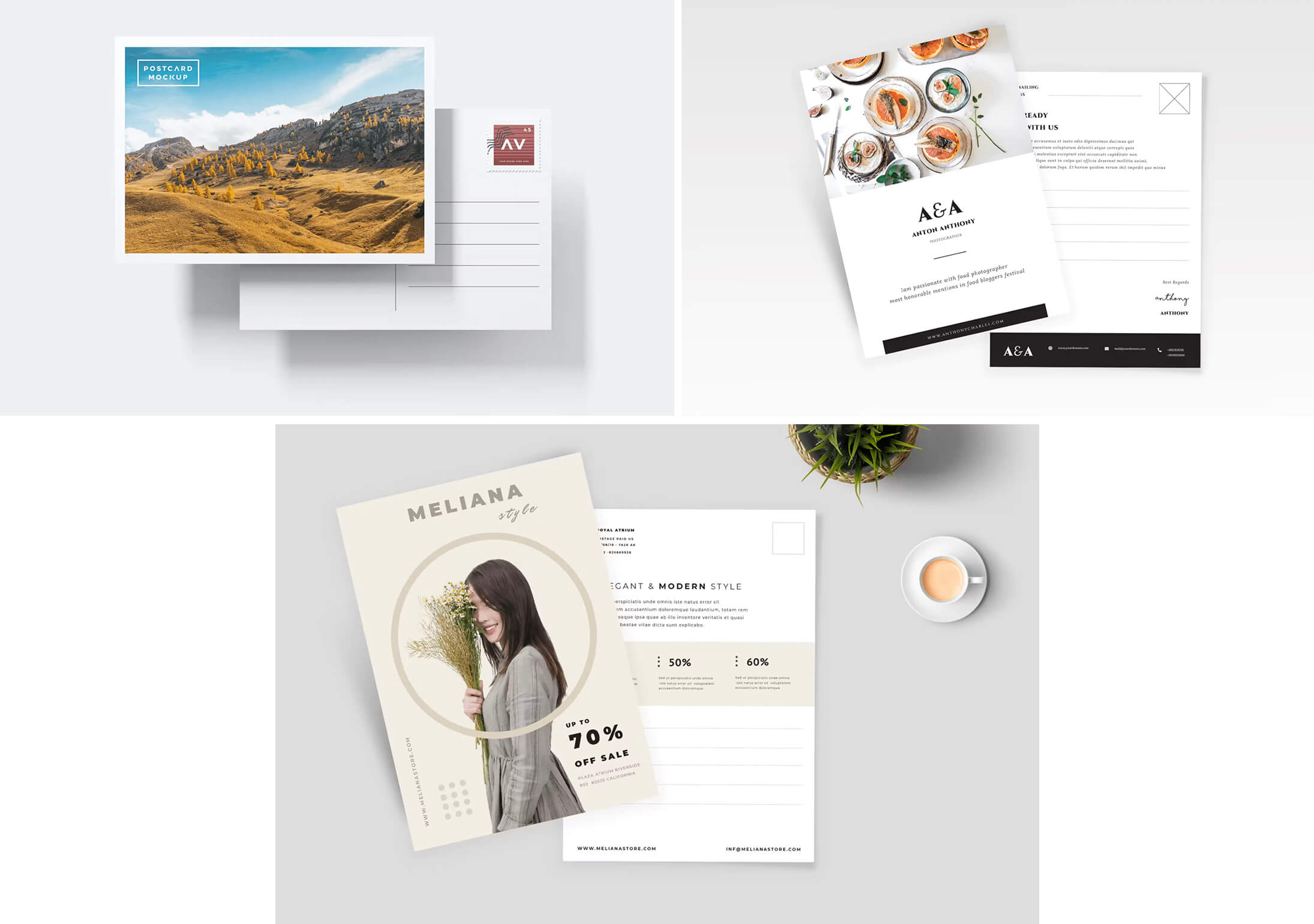
Postcards are a versatile and cost-effective marketing tool that can be used for various purposes. They are an excellent choice for businesses looking to reach their target audience, convey concise messages, and generate leads or sales.
One of the primary benefits of postcards is their ability to be used in direct mail campaigns. By sending personalised postcards directly to potential customers’ mailboxes, businesses can create a targeted approach that is more likely to convert into sales.
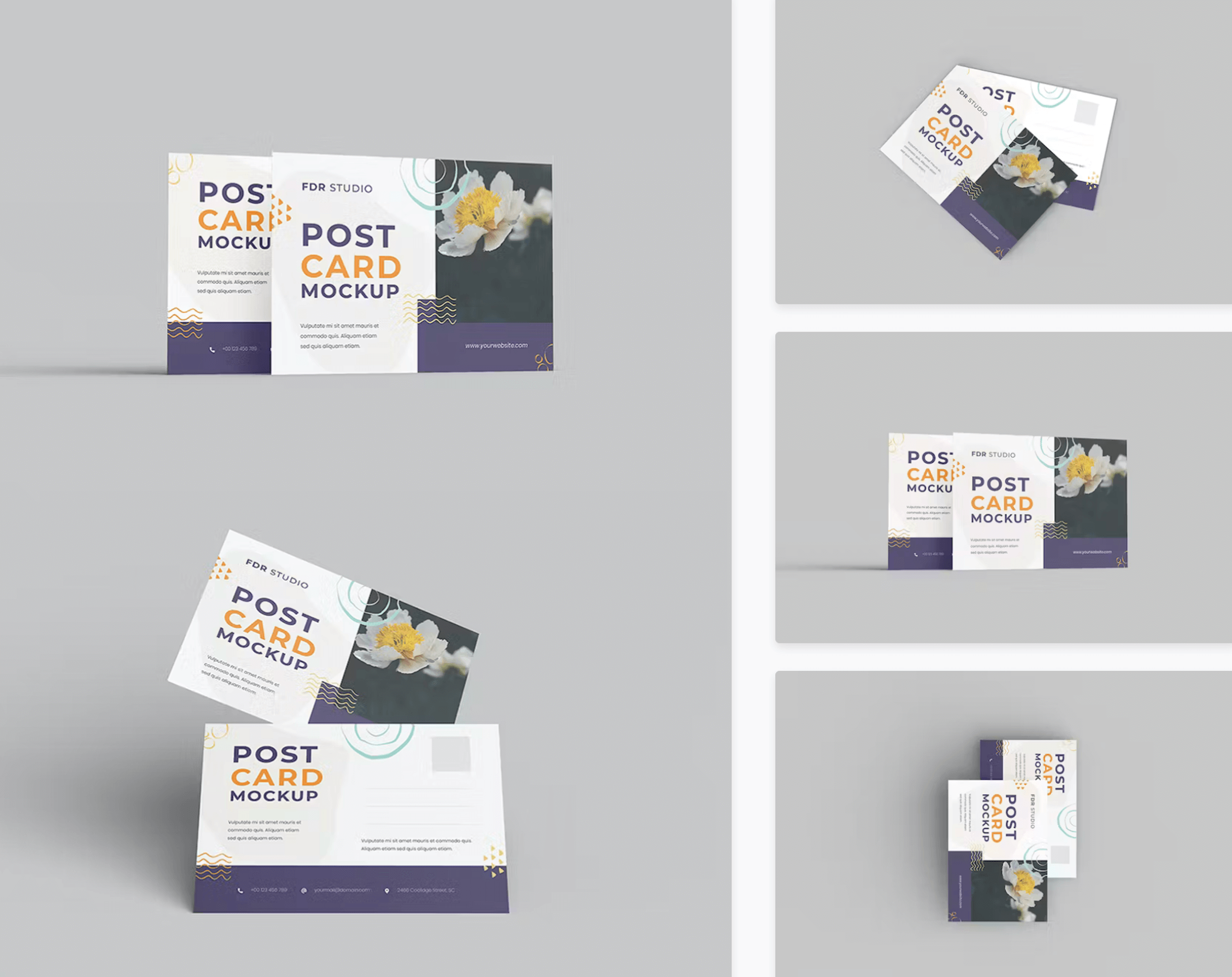
Event invitations are another purpose for which postcards work exceptionally well. Whether it’s an invitation to a product launch or an exclusive event, using a custom-designed postcard adds style and personalisation while also creating anticipation around the upcoming event.
Product promotions also benefit from the versatility of postcards. Businesses can showcase new products with eye-catching visuals and clear messaging while providing coupons or discount codes on the backside.
Creating eye-catching postcards
When designing postcards for business promotion, it is essential to incorporate brand elements like logos and visuals to make them stand out.
A clear call-to-action on the postcard is crucial in encouraging recipients to take action. It could be a discount offer or an invitation to visit your store/website.
The colour scheme used in creating a postcard should reflect the company’s branding and appeal to its target audience. Using contrasting colours can create visual interest and make the card more memorable.
It is also important to consider the size of the postcard when designing it. A larger size may allow for more information but could cost more in printing and mailing expenses.
Using high-quality images that are relevant and eye-catching will increase engagement with potential customers. Incorporating humour or unique designs can also leave a lasting impression on recipients.
Custom postcards pricing
Custom postcards are an effective and affordable marketing tool for businesses looking to promote their products or services. The price range for custom postcards varies depending on several factors such as size, printing techniques, paper quality, finishes, customisation options, and quantity.
The most common postcard sizes include 4×6 inches and 5×7 inches. Larger sizes may cost more due to increased material costs and require higher postage rates for mailing. Printing techniques also affect the price of custom postcards with digital printing being the most popular choice due to its affordability compared to offset printing.
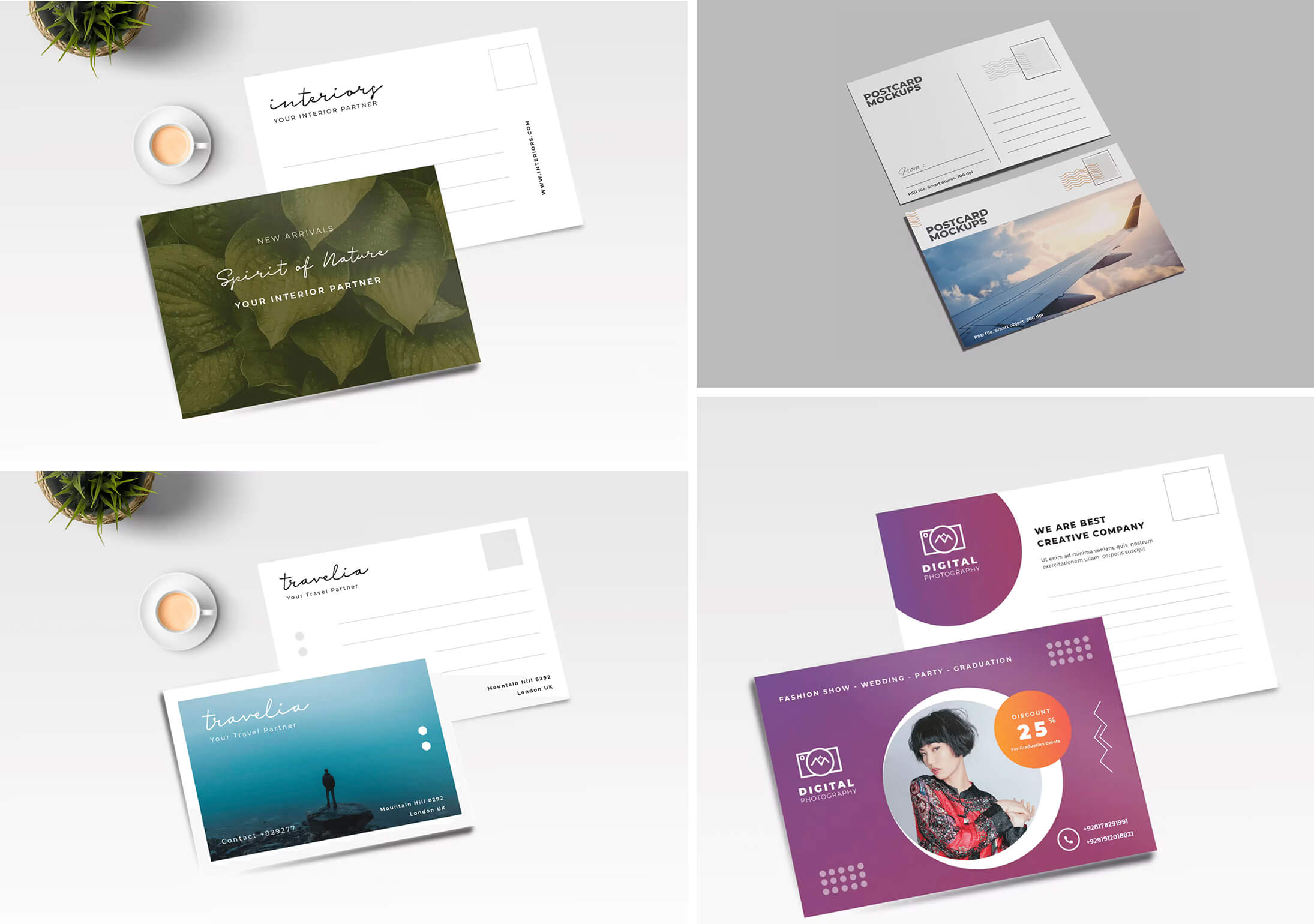
Paper quality is another factor that influences pricing with thicker cardstock costing more than standard paper. Finishes like gloss or matte coatings can also impact the final cost of a custom postcard project.
Businesses can choose from a wide array of customisation options such as full-colour printing, double-sided designs, die-cutting shapes or rounded corners. These added features will increase the overall cost but enhance visual appeal and brand recognition.
Distributing branded postcards
Postcards are a versatile and cost-effective marketing tool that can be distributed in various ways to reach a targeted audience. One effective method is through direct mail campaigns, where postcards can be sent directly to potential customers’ homes or businesses.
Strategically placing postcards in high traffic areas such as coffee shops, libraries and public spaces can also help attract attention from new customers.
In addition to promoting products and services, postcards can also be used for event invitations such as grand openings and product launches. They provide an easy way to convey important information about date/time/location while also serving as a reminder for attendees.
Types of branded postcards
There are different types of postcards available in the market, such as standard postcards, oversized postcards, or folded cards.
Standard postcards usually measure 4 x 6 inches and provide ample space for content while being easy to mail. They can be printed on both sides and are perfect for direct mail campaigns or event invitations.
Oversized postcards, also known as jumbo or large-format postcards, offer more space (up to 6 x 11 inches) for creative designs and messaging. They stand out in a mailbox due to their larger size and eye-catching visuals.
Folded cards consist of two or more panels that can hold additional information while still being compact enough to mail. They allow businesses to present multiple messages in an organised manner without overwhelming the recipient.
Finishes and options for branded postcards

When it comes to creating postcards for your business, choosing the right paper stock, finish, and coating is crucial to ensure they stand out in a mailbox or display. One option is glossy coated paper, which provides a shiny and reflective surface that enhances the colours and graphics on your postcard.
Another option is matte coated paper, which has a subtle sheen that reduces glare and fingerprints while still displaying vibrant colours. For those looking for an eco-friendly choice, recycled paper stocks are available in various textures and finishes.
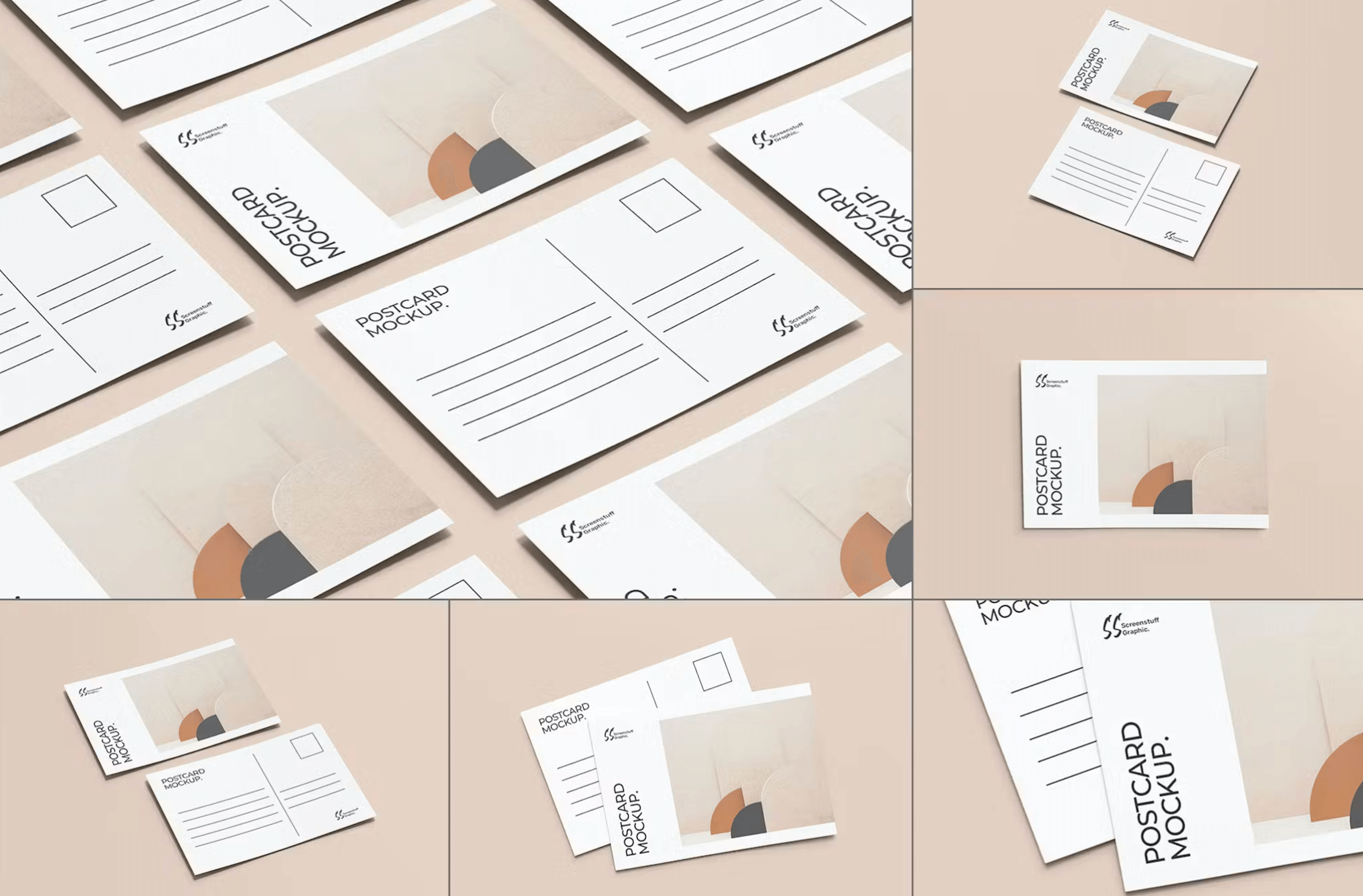
In addition to the type of paper used for postcards, there are also different finishing options to consider. These include spot UV coating, which adds shine and texture to specific areas of the card design; embossing or debossing techniques that create raised or sunken designs respectively; foil stamping for metallic accents; or die-cutting for unique shapes.
Branded business stationery is a crucial component of effective marketing strategies, offering a range of items that promote brand identity, professionalism, and visibility. From business cards and letterheads to notepads and pens, each item serves a unique purpose in reinforcing brand awareness and leaving a lasting impression on customers and partners. Additionally, items like calendars, presentation folders, and rollup banners offer practicality and enhance brand visibility in various settings.
By investing in a comprehensive suite of branded business stationery, businesses can establish a cohesive and impactful brand presence, strengthen customer relationships, and differentiate themselves in the market.